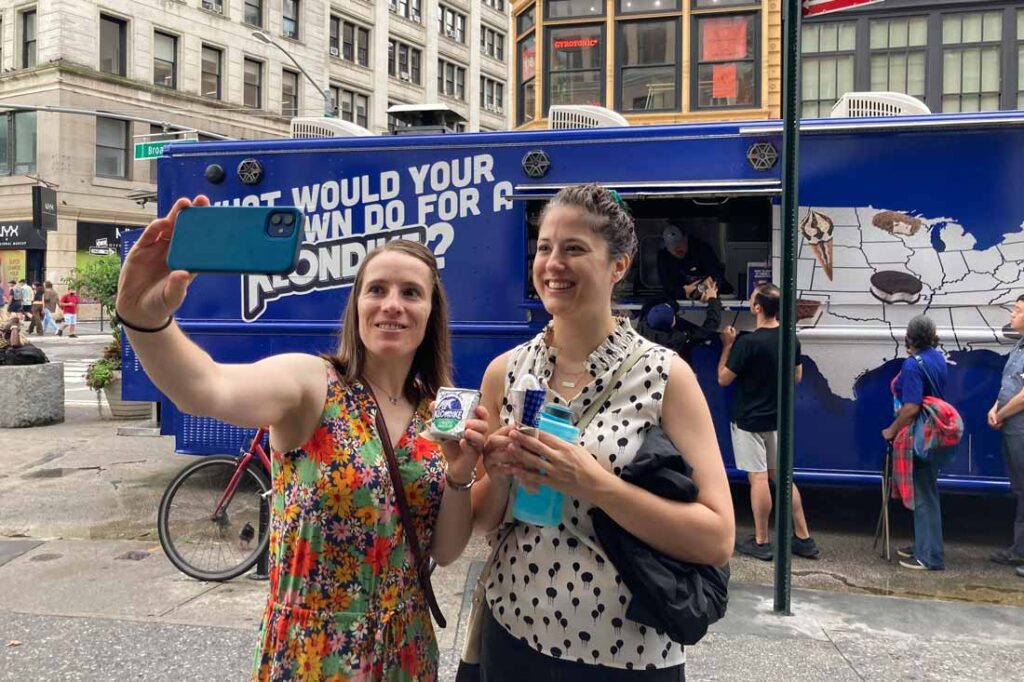In a society where people are increasingly online, marketing strategies have had to adapt to remain effective. While the days of traditional grassroots marketing—characterized by face-to-face interactions, local events and word-of-mouth campaigns—are not necessarily over, they have evolved. This evolution has largely been driven by the rise of social media, influencer marketing and the emergence of innovative digital platforms.
Tara Schroetter, vice president of digital and social at MMGY Wagstaff, explains that “influencers are your new street team, a viral TikTok trend is your new word-of-mouth and geo-targeted Instagram ads allow reach into a niche audience set with the click of a button. It hasn’t so much replaced grassroots marketing but evolved alongside it and can enhance it.”
What customers want in a post-pandemic world
While grassroots marketing has evolved, some aspects that made it so effective haven’t changed. At the core of successful marketing tactics is a focus on community. Why? As we’ve shifted priorities and values as a society, people’s expectations for brands have grown and changed. Jeffrey Steadman, community engagement director for Cotopaxi, says people don’t just want a product anymore.
“They want a relationship with your brand,” Steadman says. “They’re looking for ways to connect with companies on a personal level. Humans need connection.”
Consumers are also looking for companies that prioritize their values.
“Now more than ever, people care deeply about a brand’s purpose,” says Chad Jensen, president of Round Room, TCC and Wireless Zone. “Customers want to engage with companies that share their values. Ten years ago, the strategy of reaching a mass audience and simply being informative about your product may have worked, but that is not the case in today’s society, where consumers expect and demand more from the businesses they support and shop.”

Grassroots marketing in the social media age
A response to that yearning for connection and alignment in values can be seen in social media campaigns. Jackie McKellar, a marketing and sales director, emphasizes the transformative impact of the digital age on marketing strategies.
“The digital age has revolutionized grassroots marketing by providing more efficient and data-driven methods for brands to target, engage and mobilize large audiences, regardless of geographic location,” McKellar says.
The proliferation of social media platforms such as TikTok, Instagram and Facebook has extended the reach of grassroots efforts, enabling messages to “go viral” and reach a global audience. Social media has redefined how brands engage with their communities. Brands can turn their super fans into online advocates who spread the word about their products and offers. Social media also serves as a customer support hotline, enhancing customer service and resolving issues efficiently.
“We also see the rise (and sometimes fall) of platforms like Discord or Clubhouse that are enabling brands to have personalized conversations without guerrilla-style efforts,” says Sarah Remesch, founder of 270M, an agency specializing in talent management and influencer campaigns. “These platforms offer a more intimate, engaged and interactive space for brands and their audiences, and most importantly, they can reach a wider geographic group of people in a more efficient period of time.”
Part of online community building is utilizing those who are rooted in the community and respected as leaders and trailblazers. This is where influencers come into play. Remesch draws a compelling parallel between influencer marketing and grassroots marketing in the digital age.
“Influencers, especially micro-influencers, have niche, dedicated audiences,” she says.
“Collaborating with them allows brands to tap into these communities in an authentic manner. The trust and rapport that influencers have with their followers can be likened to word-of-mouth recommendations in more traditional grassroots campaigns.”
Grassroots marketing: Beyond the digital connection
Although social media is a powerful and essential tool, the relationship can’t stop there. Jensen underscores the importance of striking a balance between online and offline interactions. He observes that in a world increasingly dominated by digital communication, maintaining a human touch is essential to fostering genuine relationships between brands and their customers.
Jensen’s perspective resonates with Steadman’s experience with the enduring power of face-to-face connections and the importance of building trust within local communities.
“Social media and the online space as a whole is a great place to start connection,” Steadman says. “You couldn’t build a more effective tool to help curate a group of like-minded people who want to support a brand and maintain connection. But it has to move beyond the digital space because the connections that people are seeking are becoming more and more robust.
“Online connection can be a good start, but there’s no substitute for real, honest-to-goodness connection,” he continues. “That’s why Cotopaxi is investing in community; when you connect online you might learn something, but when you connect in real life, you feel something.
Community is a long-term investment and you have to be strategic about how and where you employ it, but in the end, those human connections build a moat around your brand.”
How has grassroots marketing evolved?
To create that crossover from the digital space to physical human connection, Steadman and his team host a 24-hour adventure race called Questival, which encourages people to partner up with a group of friends and explore areas in their communities.
“Our first Questival in 2014 generated 30,000 Instagram posts,” he says. “Over the years we continued to leverage that content and reach new participants on social media. We still hear from people all the time who tell us about their first Questival. Questival has not only helped convert participants into lifelong fans, but the real impact has been that they also turned into brand evangelists helping to spread the word about our mission.”
There are also times when traditional grassroots marketing continues to be effective. McKellar points out that there are certain buying demographics that may not be digitally active. She also explains that there are still industries that can benefit from the traditional approach. A few sectors are real estate, financial advising, insurance, home repairs, brick-and-mortar retail and health care, where networking and referrals from friends and family make up the client base.
“These types of personal referrals that grassroots marketing can help far outweigh the value of online reviews or digital advertising in most cases,” McKellar says.
The future of marketing
Looking ahead, the future of marketing is exciting. On one hand, AI is now being used to power tools, an advancement piquing the curiosity of audiences. A recent MMGY campaign harnessed that curiosity on the digital community platform Reddit with a campaign insinuating that AI replaced a tourism board’s ad agency.
“Complete with AI-generated images, a new logo, stunts and taglines, the Megathread had 1.4 million views and an impressive 19% upvote rate in its first two days, and the campaign-specific landing page continued the journey,” Schroetter says.
Alongside the power of algorithms, Steadman foresees a shift from personalization to humanization.
“In marketing, the last decade was about personalization; the next decade will be about humanization,” he says.
The digital evolution of grassroots marketing has not replaced its traditional counterpart but has expanded its reach and impact. It emphasizes the importance of fostering authentic connections, leveraging social media and embracing the human aspect of marketing. It has become more complex. With so much digital marketing in this space, people are also becoming more adept at parsing out the genuine from the fake.
As Steadman says, “Community marketing isn’t just a tactic you can try on; it has to be a part of your DNA.”
This article originally appeared in the January/February 2024 issue of SUCCESS Magazine. Photo by rblfmr/Shutterstock.com






